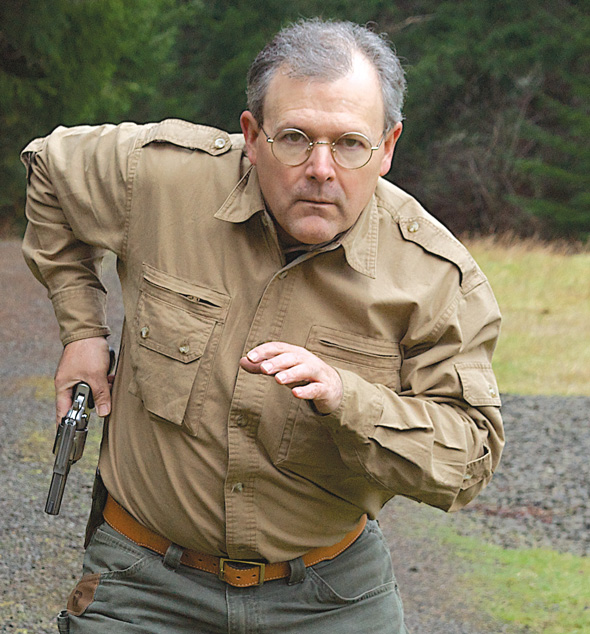At GunDigest, we independently review products. However, we may earn a commission when you purchase through links on our site. Learn More
Interview with Grant Cunningham

How a do-it-yourself project on a Colt Python turned into a career path as a revolver gunsmith, firearms instructor and book author.
Author of Defensive Revolver Fundamentals, the Gun Digest Book of the Revolver and the Gun Digest Shooter’s Guide to Handguns, Grant Cunningham has spent a lifetime with firearms as a hunter, a longtime action pistol competitor and gunsmith. These days as a Combat Focus Shooting instructor, he teaches a progressive, practical approach to the revolver as a legitimate choice for a self-defense sidearm.
When were you introduced to guns?
I grew up on a farm [in Oregon] and firearms were part of our toolset. Like most kids I started off with a single-shot .22 Winchester. Of course, we had a .30-30 deer rifle and a 12-gauge shotgun. I remember these things from the time I was very little. As kids, we were introduced to them at a young age, and they were looked upon as just another tool.
What career path led you to where you are now?
I spent many years in the photographic industry in various management positions. Some years ago, about 2000, I left my management job and was bumming around for a few years. From the mid-1990s, I had been shooting, competing and teaching a lot. At one point, I worked on a Colt Python I owned because I couldn’t find anyone to work on it. They all said it was too complicated. Massad Ayoob and I had known each other for a number of years, and one day I said, “Hey Mas, tell me what you think about the work I did here.” “Well this is really pretty good,” he said. He wrote an article about me and before I knew it I was known, and people were calling me from all over the United States wanting me to work on their guns.
You are primarily known for your work with revolvers. Why the affinity towards them?
It was really a case of nobody else [gunsmithing] them. I found that I liked revolvers from the standpoint of their efficiency. They don’t require anything beyond grasping the gun to get them ready to fire. That’s as opposed to other auto pistols that require you to deal with safeties, de-cockers or trigger pulls that change from shot to shot. Most of it, quite frankly, was that I bought my first revolver as an adult and I couldn’t hit anything with it, shooting it double action. That really annoyed me, so I put down my autoloading pistols and worked exclusively with my revolvers for a couple of years to get to the point where I could shoot them quite well.
For years you competed in numerous action pistol matches. What are your shooting hobbies today?
It would be small-game hunting with a .22 rifle. I have a serious fetish for Mossberg bolt-action .22s. I love taking them to the field and hunting with them, usually squirrels. One of my favorite things to do is to take some golf tees and put paint balls on top of the tees. I then get back 25 or 50 yards, and shoot them with the .22 and watch them splat once they get hit with the bullet.
What’s a tip for beginners starting with double-action revolvers?
My advice is to force yourself never to cock the gun to single action because that defeats the entire purpose in shooting a double action firearm. You’re giving up. Understanding how the double-action trigger works and how your finger has to move along the face of the double-action trigger is incredibly important.
This interview appeared in the April 17, 2014 issue of Gun Digest the Magazine.